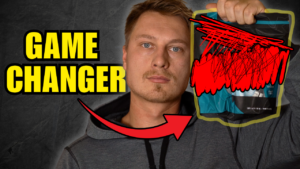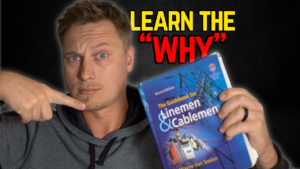The Flow Of Power
Welcome back to the lineman blog, where we go over all things electricity, and how it’s transmitted. Today we are going to go over the flow of power. How exactly does power get generated? After it’s generated, how does it get transmitted, and stepped down to be used in your home? Well today, we’re going to find out. So without further ado, let’s go down to business.
How power is generated.. Let’s start at the source, how is power generated? There are many forms of power generation, we have green sources such as windmills, solar, hydro ect… Then we have natural gas, coal, and nuclear power. Most of U.S. and world electricity generation is from electric power plants that use a turbine to drive electricity generators. In a turbine generator, a moving fluid—water, steam, combustion gases, or air—pushes a series of blades mounted on a rotor shaft. The force of the fluid on the blades spins/rotates the rotor shaft of a generator. The generator, in turn, converts the mechanical (kinetic) energy of the rotor to electrical energy. Different types of turbines include steam turbines, combustion (gas) turbines, hydroelectric turbines, and wind turbines. – shorturl.at/ckB25
From source to system.. Now that the power has been generated, it has to be transferred to the consumer. This transfer happens via power lines, more importantly, transmission lines. The bare wire conductors on the line are generally made of aluminum (either plain or reinforced with steel or composite materials such as carbon and glass fiber), though some copper wires are used in medium-voltage distribution and low-voltage connections to customer premises. So the power comes from the generation plant, into a substation. Substations transform voltage from high to low, or the reverse, or perform any of several other important functions. … A substation may include transformers to change voltage levels between high transmission voltages and lower distribution voltages, or at the interconnection of two different transmission voltages. The electrical current is then boosted in the substation to 69kv and above depending on the system’s needs. The flow of electrons then makes its way to the destination.
Substations and distribution.. Once the electrons have made their journey via transmission lines, they enter another substation. Here, transformers step down the high voltage lines into usable volts. The lines carrying this voltage are called distribution lines. The distribution network is simply the system of wires that picks up where the transmission lines leave off. These networks start at the transformers and end with homes, schools, and businesses. Distribution is regulated on the state level by PUCs and PSCs, who set the retail rates for electricity in each state. Distribution poles have something called transformers on them. A transformer is an electrical apparatus designed to convert alternating current from one voltage to another. It can be designed to “step up” or “step down” voltages and works on the magnetic induction principle. These are the “round can” looking things you see all over the poles. These allow you to step the voltage down from 12-470/7200 systems, into usable 120/240 volts that your home needs to run on. Note not all distribution levels are 12-470 /7200 volts, this is just a common level.
And that’s how it’s done.. And that’s how it’s done. Now this is a very basic overview and the flow of power. There are a lot more intricacies involved in the process. If you would like to learn more about lineman, what they do, and how to become one. Join our course Livewire Academy where we teach anyone how to get started into the line trades. We hope you took something away from this read, and until next time. Thanks.
Below is an attached video explaining the whole system. Note that we do not claim rights to this video and all rights go to the curator. Practical engineering via YouTube. Please go subscribe to there Youtube channel to learn more.


